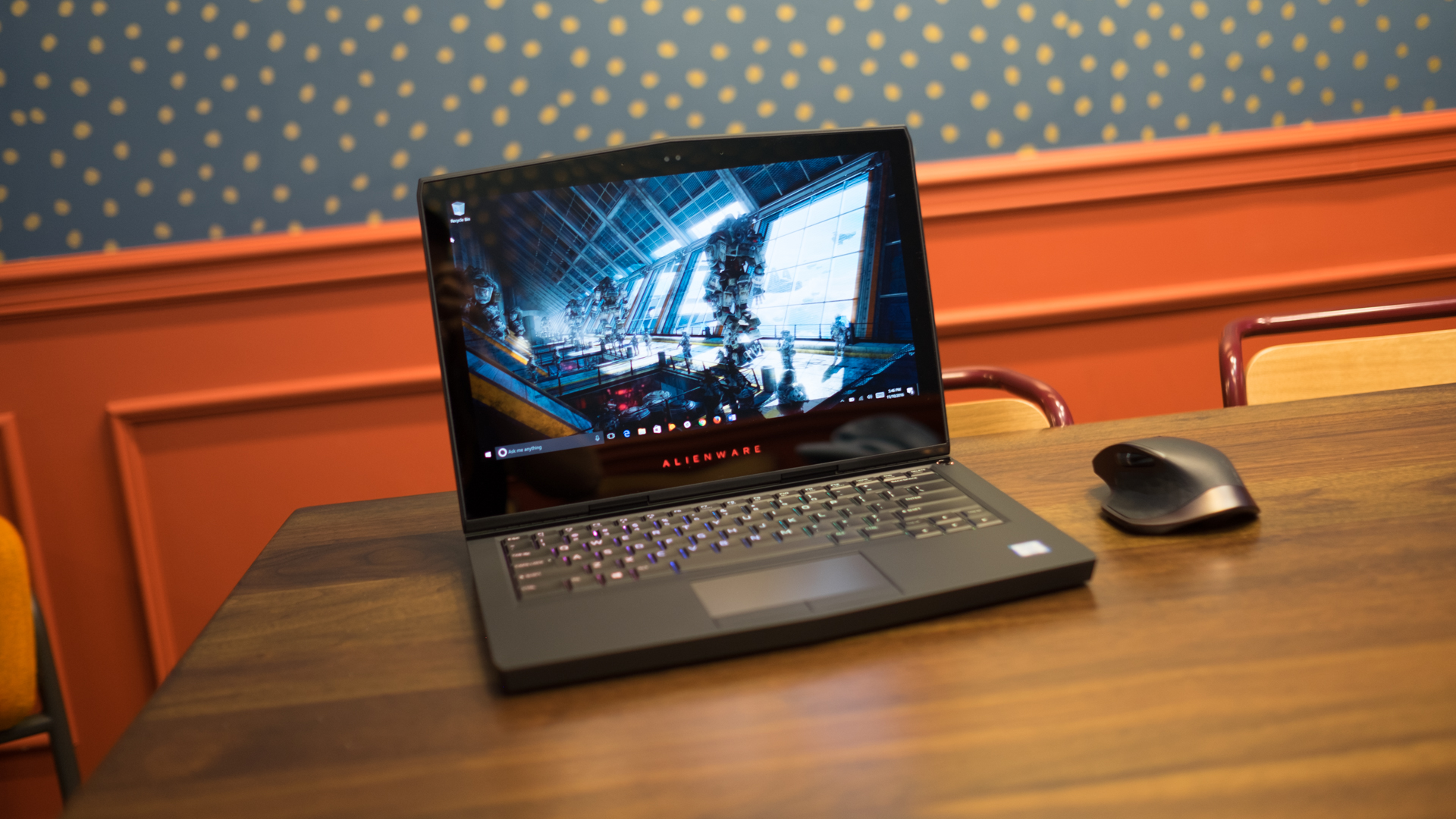Why you can trust TechRadar
The Alienware 13 R3 starts at a refreshingly affordable $1,199 or £1,249 (about AU$1,600) price, and it’s a well-equipped configuration at that. The base spec includes an 180GB solid-state drive (SSD), Intel Core i5-6300HQ processor and an Nvidia GTX 1060 with 6GB of video RAM – the same GPU available on the highest-end configuration.
That said, with only a 1,366 x 768 resolution TN screen and 8GB of memory on tap, you’ll probably want to plug in this gaming laptop into an external monitor and add more RAM to boost your gaming experience.
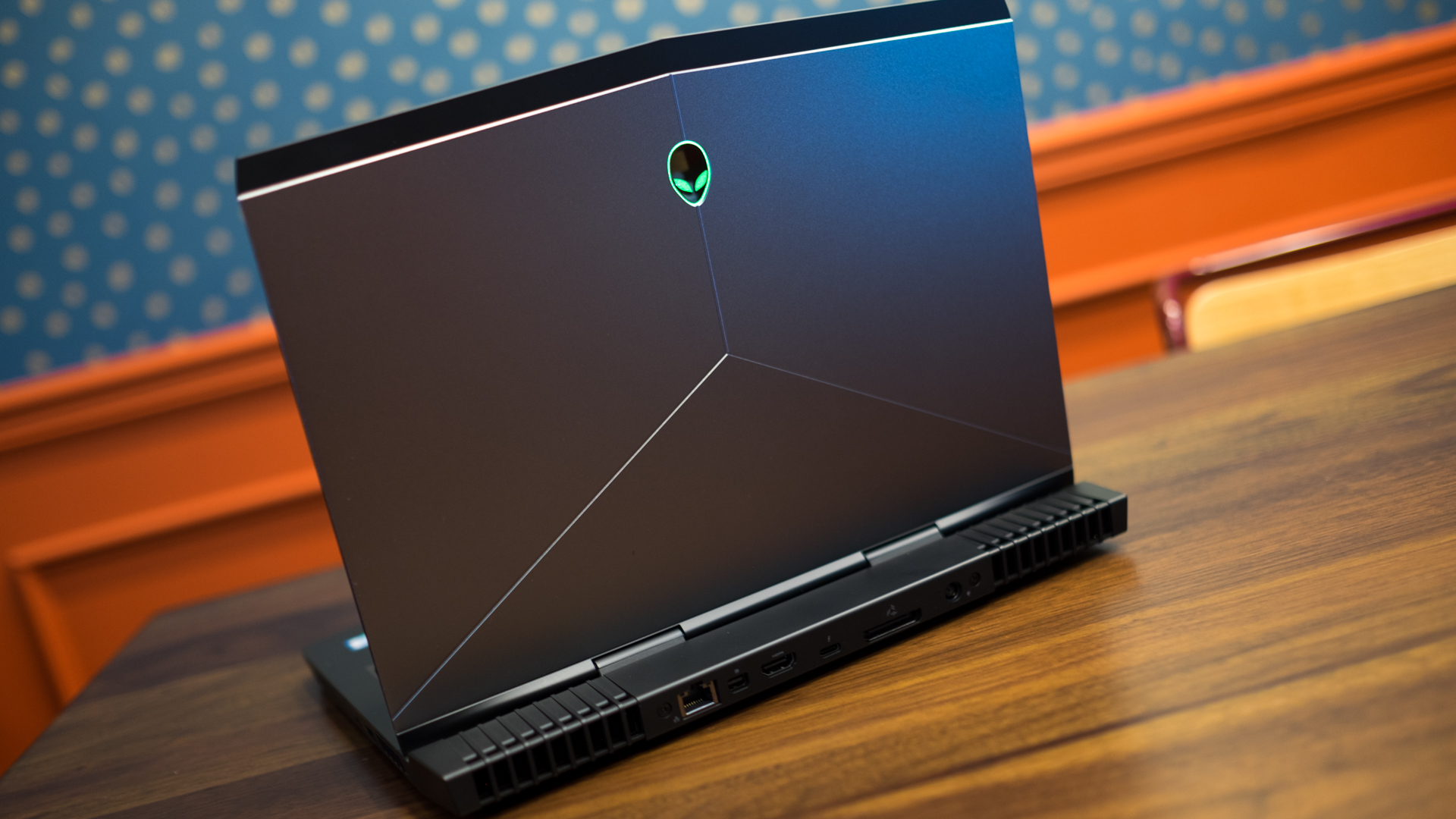
The $1,499 or £1,349 (about AU$2,000) configuration comes with a more agreeable Full HD (1,920 x 1,080) resolution IPS screen, 256GB SSD and 16GB of RAM. You’ll have to pony up with $1,799 or £1,749 (about AU$2,400) to get the OLED display, but on the plus side, this also nets an Intel Core i7-6700HQ processor bump.
Compared to the Full HD version of the $1,799 (£1,749, AU$2,599) Razer Blade, the Alienware 13 comes at a major bargain for nearly the same specs. Sure, this Alienware 13 model doesn’t include an Intel Core i7 chip, but a Core i5 HQ processor is more than sufficient, and you’ll save 300 bucks.
Another worthy rival is the Aorus X3 Plus v6, which comes with a larger and sharper 13.9-inch QHD+ (3,200 x 1,800) resolution display, the same graphics chip plus a faster and unlocked Intel Core i7-6820HK processor. Although the X3 only comes in one $1,899 (£1,849, AU$2,799) SKU with a 512GB SSD and 16GB of RAM, it’s more affordable than an equally-specced Alienware 13 that runs for $2,099 or £1,899 (about AU$2,805).
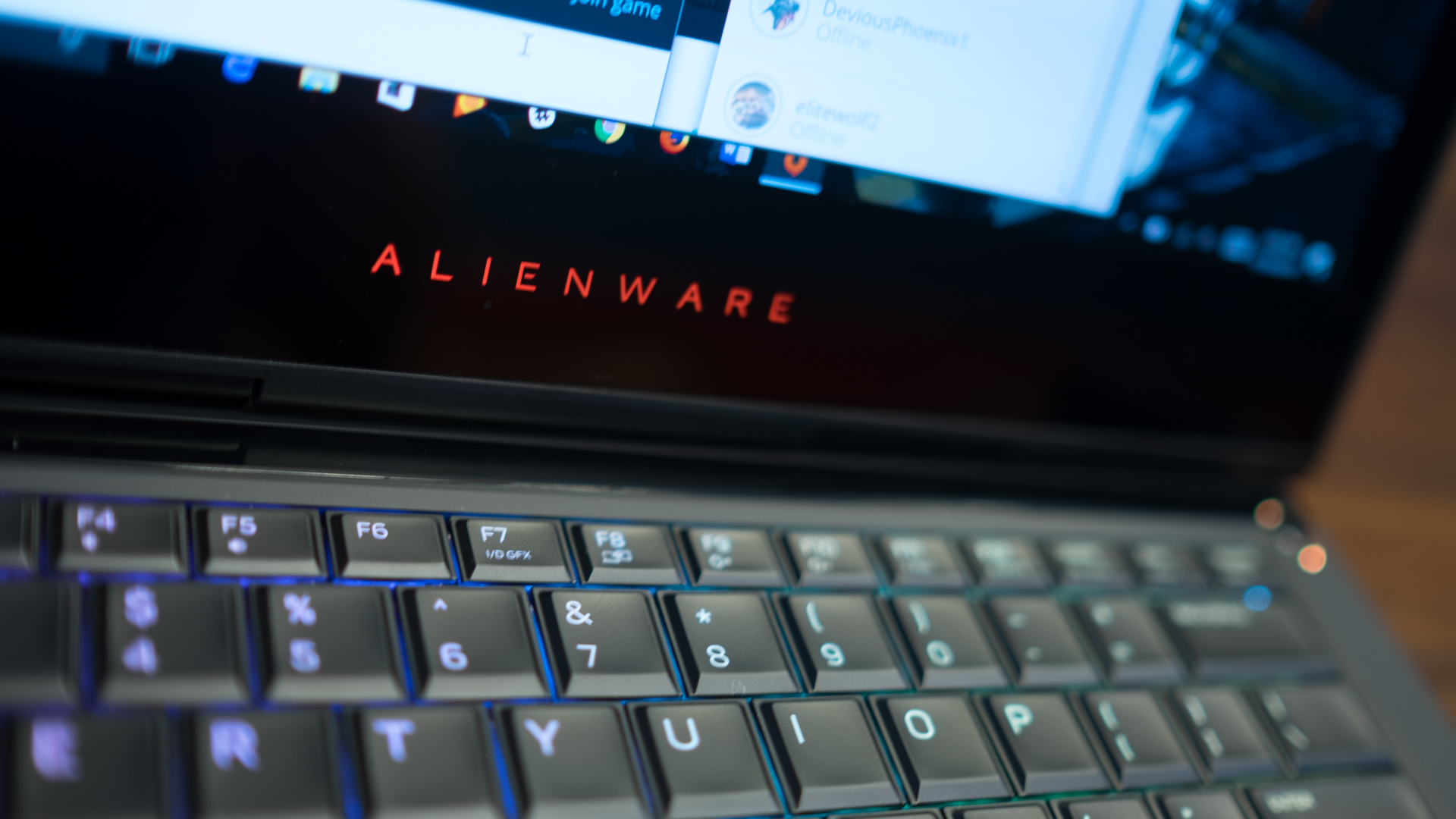
Here’s how the Alienware 13 R3 performed in our suite of benchmark tests
3DMark: Cloud Gate: 17,154; Sky Diver: 22,482; Fire Strike: 9,173
Cinebench CPU: 644 points; Graphics: 101 fps
GeekBench: 3,434 (single-core); 12,700 (multi-core)
PCMark 8 (Home Test): 3,029 points
PCMark 8 Battery Life: 1 hour and 54 minutes
Battery Life (TechRadar movie test): 3 hours and 15 minutes
The Division (1080p, Ultra): 51 fps; (1080p, Low): 124 fps
GTA V (1080p, Ultra): 39 fps; (1080p, Low): 127 fps
Performance
Alienware tells us this is the first time it has put a quad-core Intel HQ-series processor into a 13-inch gaming laptop. It’s a huge improvement over the dual-core U-series processors that proved to be a performance bottleneck for older models. The two extra cores lend themselves to much faster video rendering and powering through games.
Additionally, the onboard Nvidia GTX 1060 allowed us to enjoy perfectly smooth rounds of Overwatch with deliciously rich colors on the Alienware 13’s OLED display. Gears of War 4 and Titanfall 2 also ran beautifully on this 13-inch gaming laptop, though you’ll run into problems with running certain graphically challenging games, like Hitman.
Now that the Alienware 13 has jumped onto the quad-core CPU bandwagon, it’s an absolute powerhouse that keeps up with larger notebooks, like the Asus ROG Strix GL502 and HP Omen 17. On the processor end, this 13-inch laptop scores just as well as Asus’ 15-incher, while the HP Omen 17 and Razer Blade pull ahead with scores in the mid-13,000s.
When it comes to gaming on Ultra settings, the Nvidia GTX 1060 inside the Alienware 13 delivers a playable experience above 30 frames per second (fps). However, it doesn’t hit 60 fps quite as well as the GL502 or Omen 17 and their Nvidia GTX 1070 GPUs. If you’re fine with taking things down a notch to high settings on the Alienware 13, you’ll get much smoother frame rates.
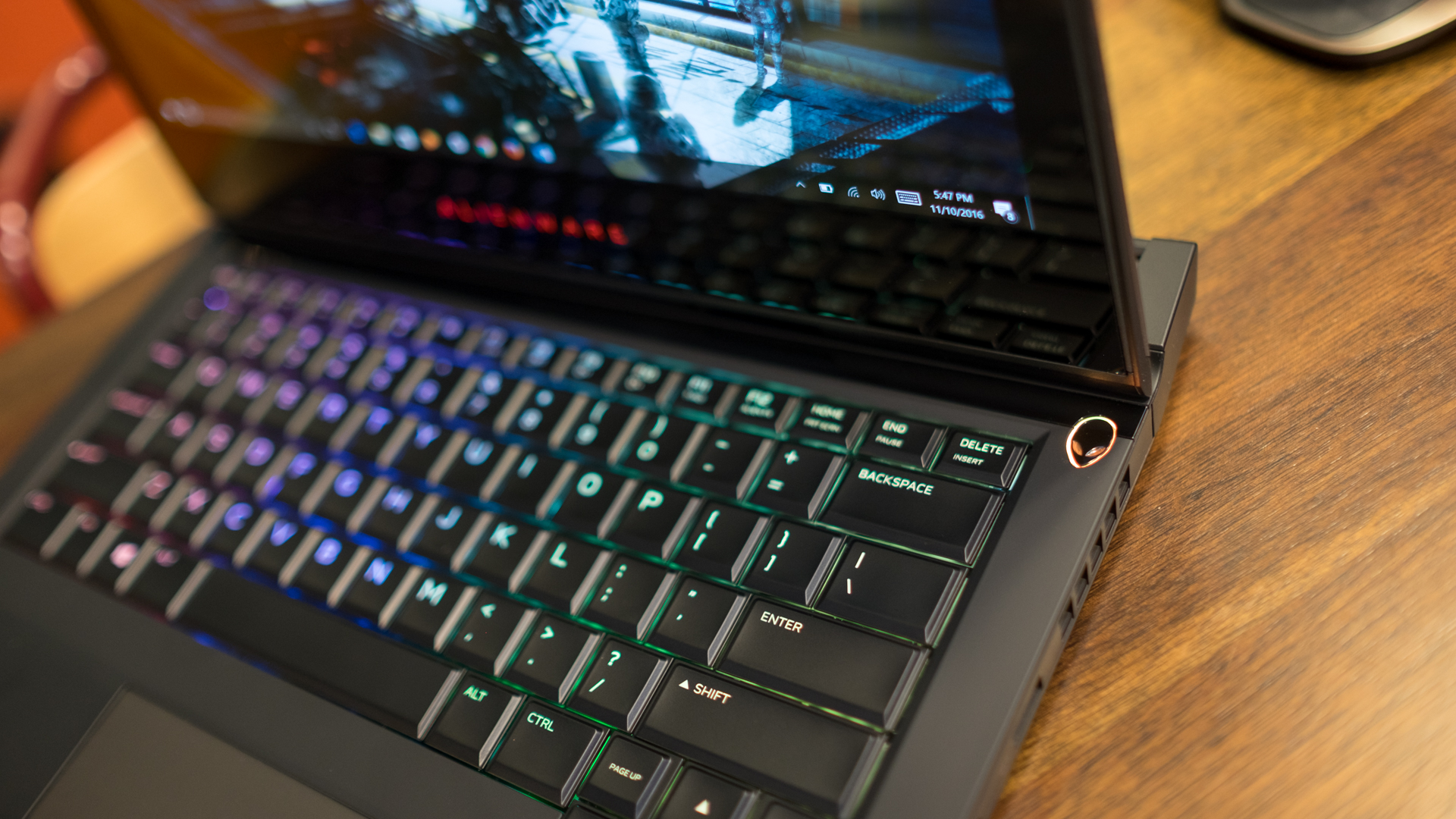
Battery life
Battery life is one performance benchmark in which the Alienware 13 falters. Alienware told us it bumped up the capacity of the batteries from 51 Watt-hours to 76 Watt-hours. However, we only saw, at best, 4 hours and 30 minutes of use through a frenzied day of Black Friday shopping.
We saw shorter runtimes in our benchmark tests, with the Alienware 13 lasting only an hour and 45 minutes on PCMark 8’s battery test. The 13-inch gaming laptop didn’t fare much better on our movie benchmark test – looping a locally stored 1080p movie at 50% brightness and volume – calling it quits after 3 hours and 15 minutes.
Compared to its predecessor, the new Alienware 13 offers disappointingly shorter battery life. Among its peers, the last generation Aorus X3 Plus v3 performs better despite having a higher-resolution screen and more power-hungry Maxwell-series GPU.
Despite Nvidia's claims to deliver 30% more battery life on Pascal-powered notebooks, time and again we've seen these machines run out of juice faster than their Maxwell-equipped predecessors. Similarly OLED panels are theoretically supposed to be more energy efficient, but the IPS and TN panels on most gaming laptops have been refined over and over again the years. Add the extra energy needs of a quad-core processor and it's understandable to see why the run times on the Alienware 13 are so short.
We liked
So far, we’ve only seen a few OLED displays make their way to the HP Spectre x360 and Lenovo ThinkPad X1 Yoga. This is the first time an OLED screen has made its way to a gaming laptop – where it arguably fits best. The 1ms refresh rate serves up perfectly smooth gameplay all while displaying the most vibrant colors and deepest blacks we’ve ever seen on a gaming laptop.
We disliked
The new Alienware 13 might be thinner, but, thanks to that extra hump in its rear, this 13-inch gaming laptop was a tight fit for most of our bags. Another knock against this notebook’s portability is its short battery life. You won’t be able to venture far from a power plug with, at best, five hours of juice in the can.
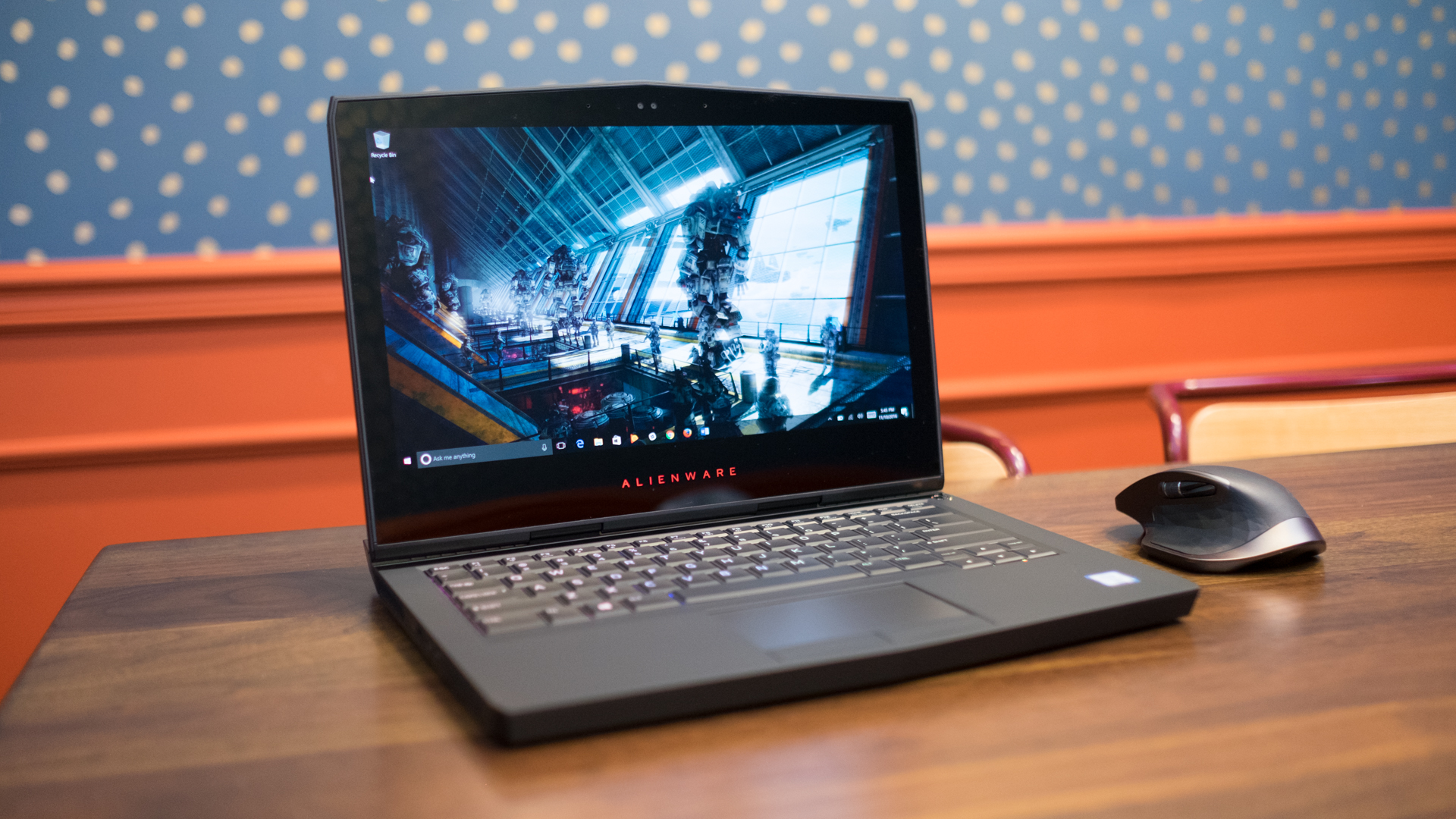
Final verdict
The Alienware 13 is an impressive gaming laptop through and through. Thanks to the new quad-core processors and Nvidia Pascal graphics, it keeps in step with larger 15-inch and 17-inch machines. You also won’t find a gaming notebook with a screen that looks as good as this notebook’s OLED display. It produces unrivaled colors and black levels with a lag free refresh rate to keep up with the fastest shooters.
Admirably, Alienware has thoughtfully redesigned almost every element of the 13-inch gaming laptop around its new hinge-forward design. It’s hardly the first notebook to feature this design, but Alienware turned the thinner frame to its advantage for better cooling and sound.
And, with a starting price of $1,199 or £1,249 (about AU$1,600), the entry-level Alienware 13 is a fine launching point for gamers even despite the barely HD display. Full HD gaming on this machine is competitively priced at $1,499 or £1,349 (about AU$2,000), and the OLED screen is well worth the $1,799 or £1,749 (about AU$2,400) price of admission.
Kevin Lee was a former computing reporter at TechRadar. Kevin is now the SEO Updates Editor at IGN based in New York. He handles all of the best of tech buying guides while also dipping his hand in the entertainment and games evergreen content. Kevin has over eight years of experience in the tech and games publications with previous bylines at Polygon, PC World, and more. Outside of work, Kevin is major movie buff of cult and bad films. He also regularly plays flight & space sim and racing games. IRL he's a fan of archery, axe throwing, and board games.
